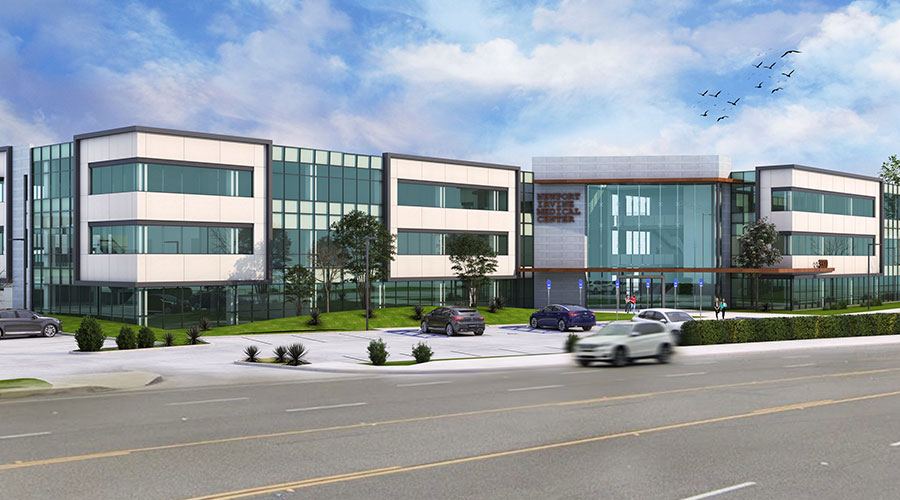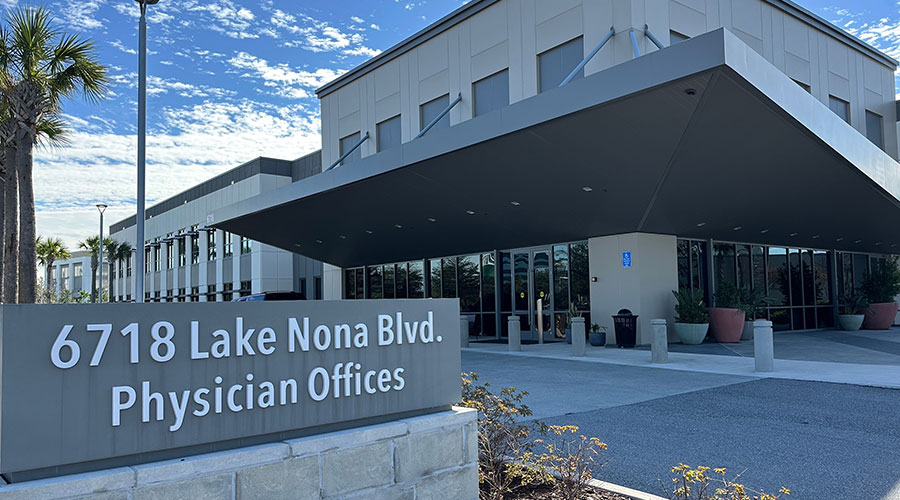Organizations of all size and sector are working to expand that positive sense of well-being found within the peaceful outdoors to their work and learning environments. Through the integration of glass windows and walls, and full-spectrum lighting and intuitive lighting controls, architects have been working for decades to bring the outdoors inside — but many now are finding success by moving traditional indoor space functions outside.
We've all seen instances where companies created an outdoor space for employees — usually intended as a lunch spot or a place for a break. Some benches or picnic tables would be placed in a somewhat sheltered corner of a facility, maybe a couple of cafe umbrellas, and that was about it. Today we're seeing a big trend toward spaces that are intentionally designed to allow employees to function fully in a productive outdoor space.
Employers are realizing that with the proper tools, people can be just as productive in an outdoor space as indoors, and often the employees are more relaxed, creative and focused. There is a strong trend now to design and build outdoor spaces where people can efficiently meet, work and learn. For meetings and collaboration especially, there's something about fresh air and natural light that brings out the best in everyone.
From a building owner perspective, outdoor spaces offer a way to provide clients with more usable areas and workspace. For hotels and shopping malls that are looking for ways to maximize guest engagement, well-designed outdoor areas represent a real opportunity for enhancing the guest or customer experience and extending stays.
City ordinances and local requirements are beginning to update their design standards for public spaces such as plazas between retail shops, parks, and other outdoor spaces to encourage employees, customers, and guests to take their time and enjoy the amenities.
The USGBC has recognized this trend as well and is actively looking to expand their Open Space LEED credit beyond the design of sustainable landscaping to also include the incorporation of more technology.
New outdoor spaces are becoming a true extension of an organization's facility and capabilities. Outdoor spaces are being equipped with appropriate access to power and charging stations, fast Wi-Fi connections, comfortable seating, worktops and proper lighting. Just as with indoor areas, facility designers need to think through how people will use the outdoor space and equip it for its intended purpose.
If it's really a collaborative space, then perhaps it's a space that's available for scheduled meetings like an indoor meeting room would be, and is equipped with an AV system, either a large flat display or pull-down screens and projectors to share presentations. Or perhaps the area is more for hosting customer events or something after hours with a more social function. And sometimes there is designed cross-over with the spaces.
A major US manufacturer, for example, recently purchased a sizable number of our charging stations, and we learned that they were creating what they called an outdoor "employee relaxation area". This was a big area that also includes a corporate store. The space is between thestore and the employee office building, and is intended as a place for store visitors and employees to relax. There's plenty of power, seating, lighting elements and free Wi-Fi connectivity. It's a nice, peaceful area with fresh air and sunshine that employees and guests can enjoy.
Many large and progressive companies like Apple, Google and Microsoft have been utilizing outdoor spaces and have big plans for incorporating even more well-equipped outdoor spaces on their campuses. Microsoft has their "meet me in the trees" treehouse work spaces that are part of a larger new system of technology-enabled outdoor districts connected to buildings around campus and empowering employees to work in new ways.
The new Apple Park is a circular multi-floor facility surrounding and incorporating over 175-acres of tree-dense outdoor space — complete with walking and biking trails, and many business and relaxation cross-over areas — and includes an Apple store, several cafes, a theater and exhibition space, and a roof-top terrace overlooking the campus, with extensive landscaping throughout.
Not every business can invest like Microsoft and Apple, but facilities and corporate offices of all size are realizing the benefit of providing for the better welfare of their employees and their guests with outdoor spaces. And organizations don't need to have acres and acres of green space – the idea of extending office space into a roof-top area is very popular. Intentionally-designed roof-top spaces equipped with power, Wi-Fi, and comfortable seating can be an excellent and affordable option.
With advancements in power distribution, charging stations, cell and Wi-Fi data connectivity, and the exciting developments happening within solar power technologies, outdoor spaces are on the edge of an exciting revitalization and are quickly becoming the new must-have spaces in commercial facility design.
Sabrina Snyder is a product marketing manager for Legrand North and Central America.

 States Move Forward to Better Protect Senior Citizens
States Move Forward to Better Protect Senior Citizens Archer and REDA to Transform Newport Beach Building into Outpatient Center
Archer and REDA to Transform Newport Beach Building into Outpatient Center Sunflower Medical Group Facing Lawsuit Following January Data Breach
Sunflower Medical Group Facing Lawsuit Following January Data Breach Nemours Children's Health Opens New Location in Lake Nona
Nemours Children's Health Opens New Location in Lake Nona Enhancing Safety at Hennepin Healthcare with a Screening System
Enhancing Safety at Hennepin Healthcare with a Screening System